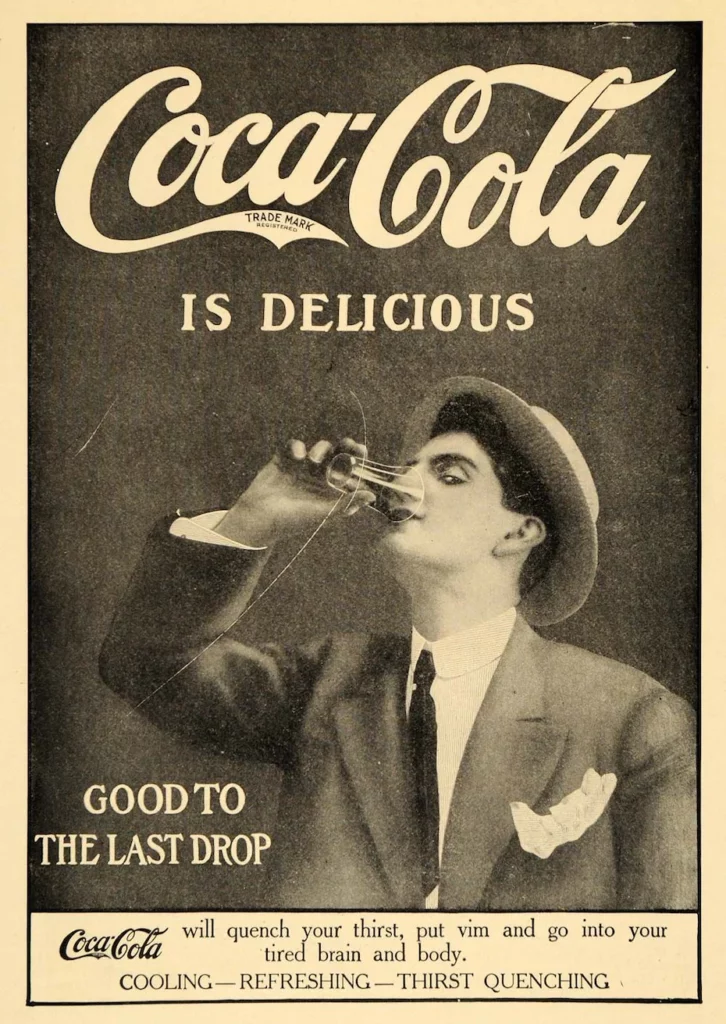The history of branding spans centuries and has evolved over time from simple trademarks to a complex and profound aspect of our visual culture. The history of branding is a fascinating journey through the evolution of business, society and technology. In this blog post, I will trace the evolution of branding over time.
Analyzing the history of branding helps me gain an understanding of the historical evolution of branding to better understand current practices and predict future developments.
16th century: Beginnings
In Old Norse, the word „brandr“ originally meant „burning piece of wood“ and later a torch. In the 16th century, cattle were marked with brands to identify ownership. These brands were simple, unmistakable symbols, comparable to the first product logos. From the very beginning, they were used to make a mark both literally and metaphorically.

Image source: https://99designs.de/blog/designgeschichte-stroemungen/branding-geschichte/
1750s to 1870s: The industrial revolution
In the 18th and 19th centuries, new manufacturing processes enabled mass production, increasing consumer choice. In this competitive environment, trademarks became crucial to stand out. From the 1870s, registered trademarks became increasingly important and the first US Trademark Act was passed in 1881. This was the first time branding was recognized as intellectual property.
1870s to 1920s: The age of inventions
The turn of the 20th century was characterized by technological change and visionary achievements. The Wright brothers‘ flight in 1903 symbolized the creativity and innovation of this period. Companies such as Coca-Cola, Colgate, Ford, Chanel and LEGO, which emerged in this era, were pioneers and trendsetters. Ford was an early seller of gasoline-powered vehicles, while Chanel introduced innovative fashion concepts. Print media played a key role as brands stood out in newspapers and magazines through words, logos and illustrations and advertisements informatively presented the product.

Image source: https://99designs.de/blog/designgeschichte-stroemungen/branding-geschichte/
1920s to 1959s: Brands on air
With more efficient production and the need for official product claims came the move towards marketing in listening environments. In the 1920s, radio stations used advertising as a means of promoting companies by using radio jingles and slogans. The first paid radio advertisement appeared in 1922, and by 1930 nearly 90% of US radio stations were broadcasting advertisements, even entire programs were funded by corporations. With the advent of television in 1941, this trend intensified. Companies sponsored programs and created commercials that used visual, audio and musical elements to create a strong connection with viewers. Television allowed brands to reach their customers closer than ever before.
1950s to 1960s: The birth of modern branding
In the post-war era, car culture, the growth of the middle class and suburbs, and the popularity of television changed the culture of production and consumption. Companies used various visible brand perceptions such as billboards, architecture and TV commercials to reach new audiences. Competition forced companies to develop brand management to differentiate themselves from similar products. The decisive step was emotional branding, where marketers created an emotional connection between product and customer by addressing their needs and developing a unique identity. This transformed branding from informative to intimate.
1960s to 1990s: Branding comes of age
Brands need rebranding over time in order to survive in a growing market. The positive example of the Walmart logo shows the need for a fresh image. Campaign slogans, as with L’Oreal and McDonald’s, can further strengthen well-known brands. Brand evolution has also influenced the retail sector, where companies such as Target have created a more engaging shopping experience through better branding and collaboration with designers, improving the brand image of retailers and companies.

Image source: https://99designs.de/blog/designgeschichte-stroemungen/branding-geschichte/
2000s to today: Beyond simple branding
In today’s era of brand overkill, it’s crucial to stand out. The digital age has changed traditional techniques like TV advertising in favor of social media and data-driven marketing. Brands are using apps, vanity URLs and hashtags to increase awareness. Coca-Cola’s #ShareACoke campaign shows how personal relationships and user engagement can create a strong connection with customers. Customer reviews on platforms such as Amazon and Yelp have a significant impact on brand perception and reputation is becoming increasingly important. Brands are increasingly turning to mission branding, such as Starbucks and Warby Parker, to drive customer loyalty. The in-store personal experience, such as free yoga classes at Lululemon, is also a key factor in brand development.
Works Cited for the entire article:
Cantor, Aviva . “Eine Kurze Geschichte Des Brandings.” Www.99designs.de, 2020, 99designs.de/blog/designgeschichte-stroemungen/branding-geschichte/. Accessed 5 Jan. 2024.